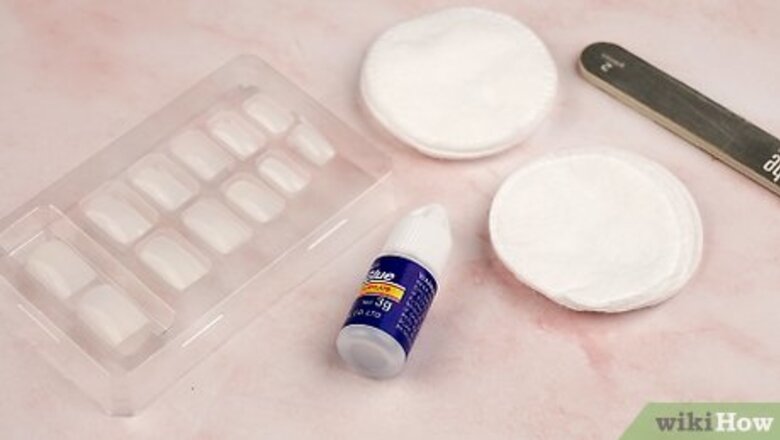
views
Applying Nails Properly
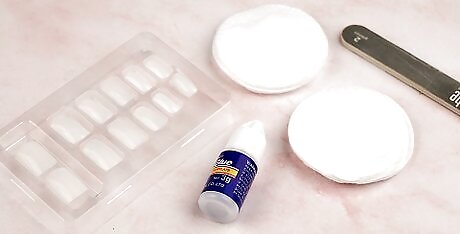
Choose an artificial nail kit. There are three main types of at-home kits for artificial nails: gel, acrylic, and press-on. Each has its own advantages and disadvantages to take into consideration when trying to achieve natural-looking, artificial nails. Gel: Gel manicures most closely resemble your natural nail, and are less damaging to the nail plate. Gel manicures last at least two weeks, depending on maintenance. They are applied like normal nail polish. Gel manicures require an ultraviolet (UV) light for drying and setting. Gel nail kits are generally more expensive than the other options, especially if the kit includes a UV light. Price range: $30-$120. Acrylic: Acrylic manicures last about two weeks. They look more natural than press-on nails, less natural than gel nails. Prolonged use of acrylic nails can cause damage to your natural nail. Price range: $8-$20. Press-Ons: Press-on nails are the easiest to apply at home, but only last about one week. They are also the least-natural looking of these options. Press-on manicures cause minimal damage to your natural nail, and are easier to remove. They are also easy to repair; if a press-on nail falls off, you can easily glue it back into place. If well-maintained, press-on nails can be reused. Price range: $5-$10.

Prepare your nails. Proper preparation of your natural nails is crucial; it helps artificial nails to adhere better and look more realistic. Wash your hands with antibacterial soap to remove any dirt, oils, or lotion. Use a manicure brush to clean under your nails effectively. Alternatively, use a wet wipe wrapped around a manicure stick or an eyelash spoolie brush to clean the underside of your nails. Clean nails with nail polish remover. Acetone-based remover is more effective for acrylic nails, but it is harsher on your naturals nails. Cut and file your nails. Apply cuticle oil or cream to your cuticles before pushing them back with a cuticle pusher. Buff your nails. Re-clean your hands and nails to remove any dust caused by filing and buffing. Dehydrate your nails using acetone-based remover or a nail dehydrating solution. This helps nail polish and artificial nails to stay on longer. Apply a nail base coat over your natural nails to protect them.
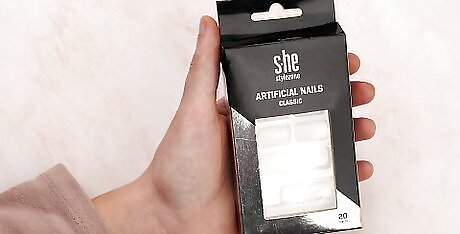
Follow the directions of your at-home nail kit carefully. Each at-home kit will have the same basic application instructions, but may vary slightly from brand to brand. Follow the directions of your kit closely, as each is specifically tailored to yield the best results for that kit.
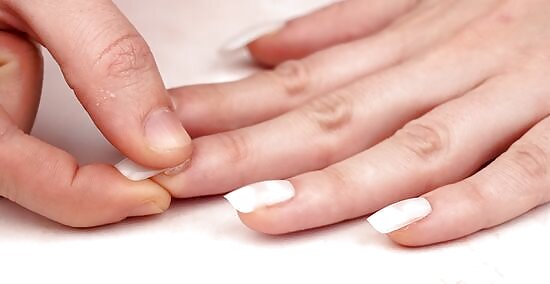
Keep in mind the specific needs of your artificial nails. Gel, acrylic, and press-on nails all have different steps you can take to make them look more realistic. Gel Nails Add some extra drying time under the UV light at the end of your gel manicure to make sure your nails cure completely and to prevent chipping. Acrylic Nails File down the base of your artificial nail tip so it is as even as possible with the surface of your natural nail. Apply acrylic solution evenly across the nail bed so that the thickness of the acrylic nail corresponds with the thickness of your natural nail. Press-On Nails Use the tip of the nail glue to spread it evenly onto your nail. Apply even pressure to press-on nails to help them stay on longer.
Keeping a Natural Look

Choose your nail color. Decide the kind of look you hope to achieve with your artificial nails. Bold hues and designs draw attention to nails, while neutral tones soften and downplay the look of your nails. A French manicure most closely resembles what your nails naturally look like unpolished.
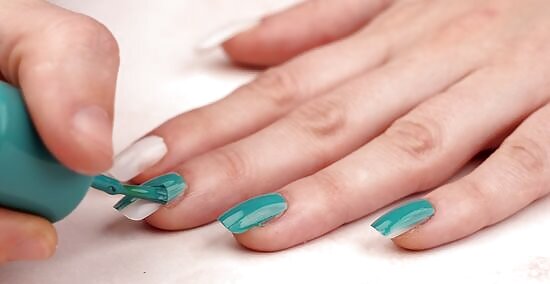
Paint a thin layer of nail polish color. Nail polish that is too thick builds up on your nail and makes it look more artificial. Start each coat of nail polish using thin, even brush strokes. It is easier to apply more color afterward than to remove color.
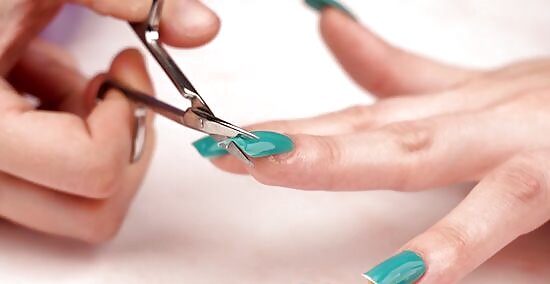
Cut and file nails to match your natural nail. Shorter nails look more realistic, as natural nails are difficult to maintain at longer lengths. Cut your artificial nails to a length that conforms with your natural nails. Notice if the tips of your nails are naturally rounded or square. File your artificial nails to maintain that same shape.
Maintaining Artificial Nails
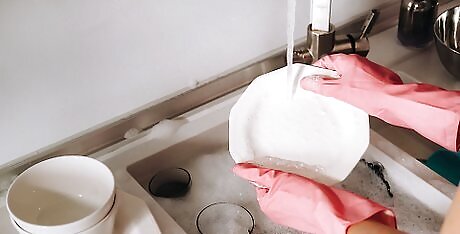
Avoid activities that are rough on your nails. Scrubbing, scratching, and scraping the nails shorten the life of your manicure. Exposure to harsh chemicals or hot water can eat away at the nail polish and/or nail glue. Wear gloves when washing dishes, gardening, cleaning, or crafting to reduce friction on your nails.
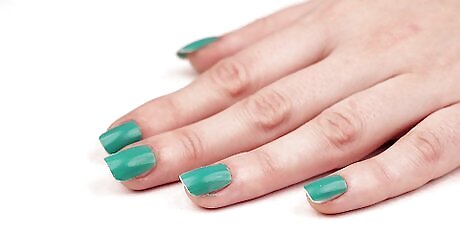
Don't pick at your nails. Picking at your nails can cause nail polish to chip, and nail tips to crack, break, or come off completely. Your artificial nails are not as strong as your natural nails.
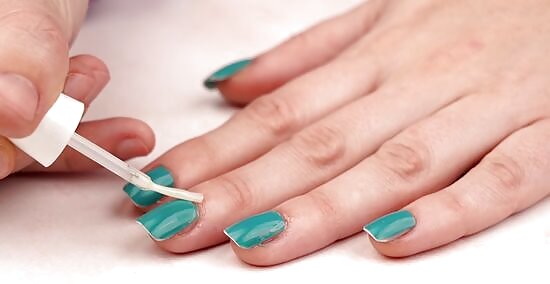
Oil your nails daily. Dry, brittle nails can cause splitting and polish chipping. To prevent this, use nail/cuticle oil on your nail beds to keep them well-moisturized.
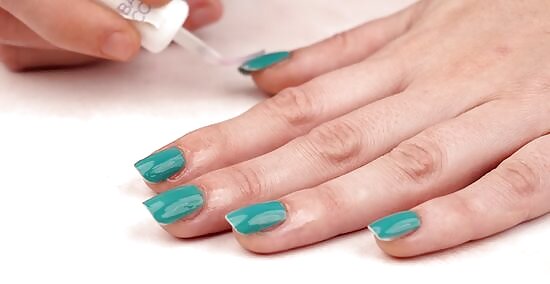
Apply a top coat every few days. This applies to gel, artificial, and press-on nails that required you to add your own polish. A top coat will help to prevent chipping and peeling, thereby extending the life of your artificial nail.
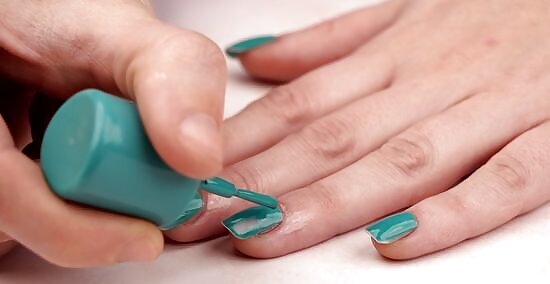
Fix nails when problems arise. Reapply nail polish to parts of nails that have chipped. Brush on more acrylic solution to areas of acrylic nails that have chipped or thinned out (and re-polish those areas). Use nail glue to re-adhere a press-on nail that has fallen off.

Fill-in your nails. After 10-14 days your nails will start to grow in, beginning at the cuticle. Nail growth makes it obvious you are wearing artificial nails. You can fill-in this area with gel polish or acrylic solution to lengthen the life of your manicure. On a press-on manicure, try painting the new area with a complementary color for an ombre look. A fill-in will only last for so long; eventually you will need to remove and reapply your artificial nails.



















Comments
0 comment